Find out what the propagation and garden teams have been up to this week.
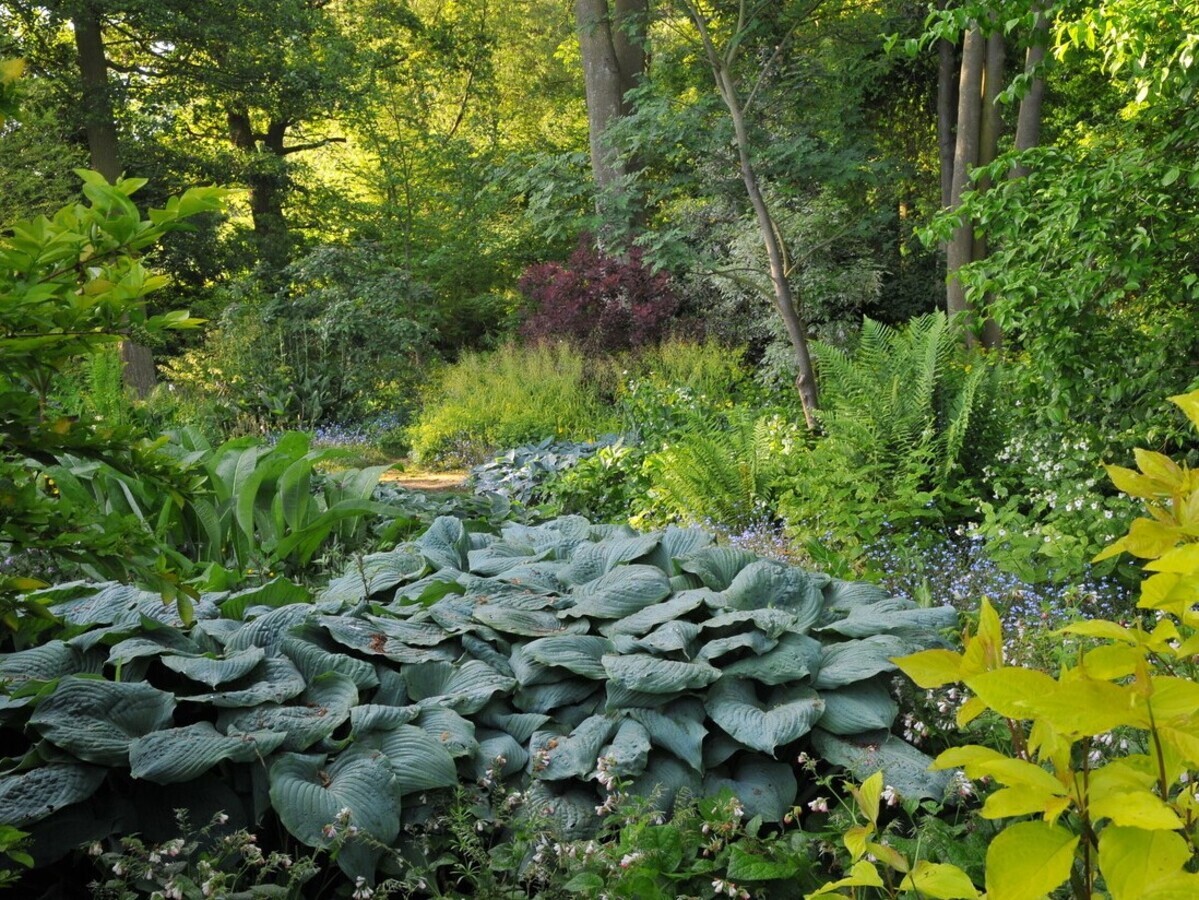
How to grow and get the best from your hostas
How to grow and get the best from your hostas
Grown predominantly for their foliage, hostas are a firm favourite with gardeners and collectors, and a key plant in Beth’s Water Garden where dramatic foliage reigns supreme. Many cultivars and forms are available offering a variety of shapes, sizes, colours and textures. Foliage colours span a spectrum of green, blue, and yellow shades; some variegated and deeply veined. Although grown primarily for their leaves, hostas also produce trumpet-shaped flowers from June to August, attractive to pollinators, especially bumblebees.
Sun exposure
How much exposure to sun a hosta can tolerate will depend on how much moisture it receives. For example, the leaves of a hosta growing in a drier location will brown quicker than a hosta growing in a reliably moist soil. The type of hosta chosen is also important as some are more sun tolerant and are less prone to scorching than others. Given the numerous variables that can impact the growth and condition of hostas, it's wise to test and learn what works best in your own unique garden setting.
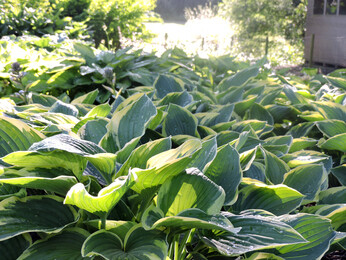
How do you keep the slugs off your hostas?
This is a question our gardeners and stock bed workers are often asked. The truth is we are still experimenting, trying to understand, through trial and error, the many factors influencing slug activity.
Rainfall, of course, has a notable effect, driving slugs to emerge and frustratingly leave their telltale shredded marks. Sun exposure can help toughen up the leaves, potentially making them less palatable to slugs; we have observed that a balance of gentle morning sunlight, followed by afternoon shade, seems to maintain plants at their optimum. Allowing space around each plant and clearing away debris from the base also helps to deter slugs by making their journey more challenging.
Hostas grown in pots will need watering more frequently as the soil dries out quicker. It is best to water pots in the morning, allowing any excess moisture on the leaves and ground to dry out during the day before the slugs emerge at night. They are most active in moist conditions, so best not encourage them!
Supporting natural predators in Beth’s Garden
We do not use slug pellets around our hostas as we are aware of the harm caused to natural predators, such as, hedgehogs, birds, frogs, toads and predatory insects who feed on the slugs and snails and are inadvertently poisoned.
We instead concentrate on making the garden as wildlife friendly as possible. The mixture of trees, shrubs and herbaceous perennials ensure there are a wide variety of nesting, hibernating and feeding sites throughout the garden. Our mature trees provide height for safety, shade and shelter, with great nesting spots. The lower growing, multi-stemmed habit of shrubs provides the perfect cover for wildlife, with flowers, berries and seeds for food.
Finally, herbaceous perennials (plants which die back down to the crown over winter), and grasses form a lower layer covering the ground, filling the gaps between trees and shrubs, offering shelter and protection. Flowering plants are a rich source of pollen and nectar for pollinators during the growing season, with their seed heads and dried, hollow stems providing seeds for birds and shelter for insects over winter.
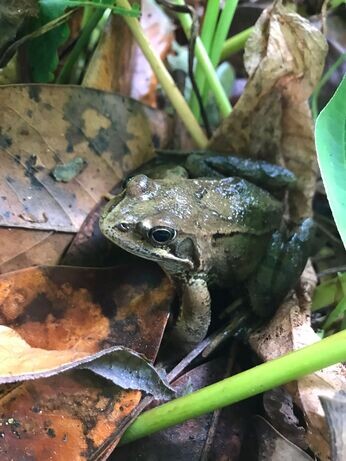
The ponds in the Water Garden and our neighbouring farmers reservoirs (all fed from a local brook), attract and sustain many birds, mammals, reptiles and insects. This eco system ensures that pest problems are mostly kept in-check by natural predators, avoiding unnecessary intervention with pesticides.
Hosta maintenance and division
Throughout the growing season, we remove any unsightly leaves to keep plants looking their best, but accept that there will always be a few holes. Dead leaves on the plants, or those that have collected underneath will harbour pests, so it is always a good idea to remove any that you spot. After flowering, we cut down the faded blooms and stalks to not only keep plants looking tidy, but to also avoid wasted energy on seed production. At the end of the growing season, we cut down the foliage after it has been touched by the first frost and wilted.
You may need to divide your hostas to maintain the size and shape, to remove dead sections or to propagate. Hosta division to maintain size and health may only need to be carried out every five to ten years depending on the hosta type and whether it is grown in a pot or open ground. Our stock bed plants are divided on a three-year rotation to ensure that plants are robust and healthy. This in-turn means that plants propagated for sale grow strongly and are better able to withstand pest damage.
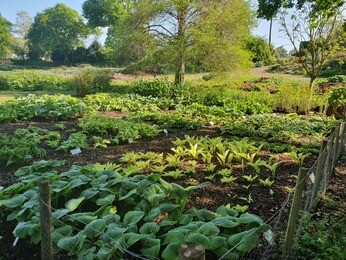
Stockman Marc shows us how to divide hostas for propagation, see video
We have a wide range of hostas for sale on our nursery and website. There is a hosta for every space (provided that it receives adequate moisture); large-leaved, dramatic hostas such as H. sieboldiana var. elegans, to delicate, miniature varieties such as H. ’Thumb Nail’, growing to only 15cm in height.
Below are just some of the cultivars and forms we propagate and have for sale:
1. Hosta ‘Gold Standard’ (fortunei)- medium-sized leaves are deeply veined and an eye-catching shade of soft yellow, edged thinly in green. As the leaves mature throughout the summer, the yellow of the leaves intensifies. In June and July, light-blue flowers are held above the impressive foliage. Plants reach 60cm in height and 70cm wide.
2. Hosta (Tardiana Group) ‘Halcyon’- a fantastic blue-leaved hosta raised by plantsman and propagator Eric Smith. The blue colour is produced by a thin, waxy coating on the heart-shaped leaves. Lilac-blue flowers are held on purple stems in late summer. Plants reach 40cm in height and 60cm across.
3. Hosta sieboldiana var. elegans (Giant blue hosta)- the dramatic, deeply veined foliage deliver a long season of interest by turning exceptional shades of amber in autumn. From June until July, white bell-shaped flowers are held above the foliage. This hosta grows to a height and spread of 75cm.
4. Hosta ‘Guacamole’- this much sought after, large-leaved variety offers green margined, gold centred foliage as well as exceptionally fragrant, large, white to lilac flowers. It grows to approximately 80cm with a spread of 70cm.
5. Hosta ‘Spinners’ (fortunei)- the foliage of this medium-sized hosta first emerge with a vivid, creamy-yellow edge. As the plant matures the edges fade to a creamy-white. Light-purple flowers are produced in July and August. The height and spread of this variety is 60cm.
6. Hosta (Tardiana Group) ‘Blue Danube’- the vivid blue foliage of this medium-sized variety stands out in a shady spot. In mid-summer, lavender-blue flowers appear until August. This variety grows to a height of 40cm and a spread of 30cm.
7. Hosta ’Blue Mouse Ears’- a miniature hosta, ideal for growing in a container. The blue-grey, overlapping leaves, reaching a height and spread of 15cm, are remarkably resistant to slugs. Small, lavender-blue flowers are held above the foliage in June and July.
8. Hosta fortunei var. albopicta f. aurea Eric Smith’s form- during early summer, broad, pointed, pale-yellow leaves are ‘stitched’ with fine green veins, creating a quilted effect. The colour matures to light green by the summer. This form reaches a height and spread of 60cm.
For our full range of hostas, CLICK HERE.
By Leanne Crozier
![]()

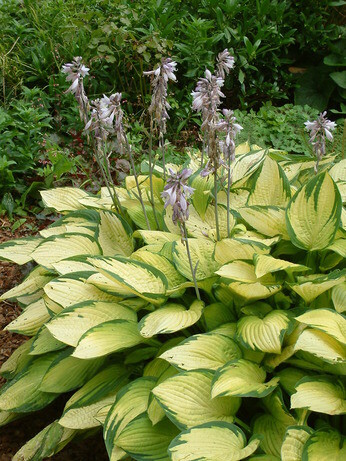
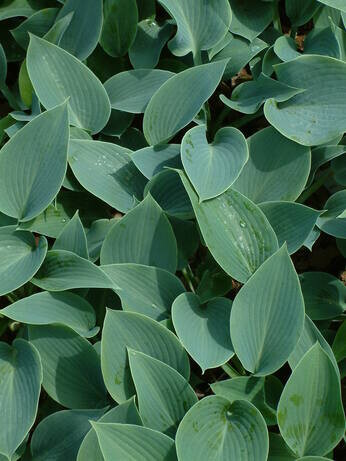
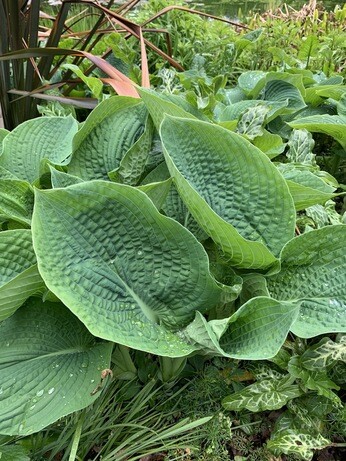
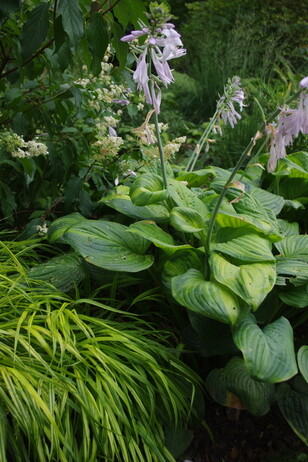
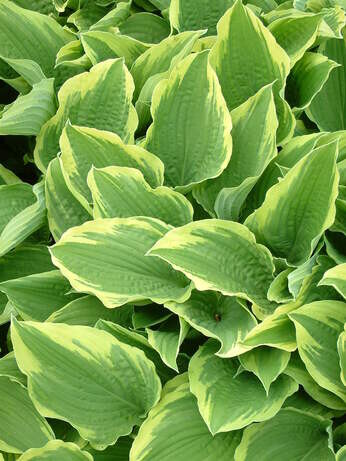
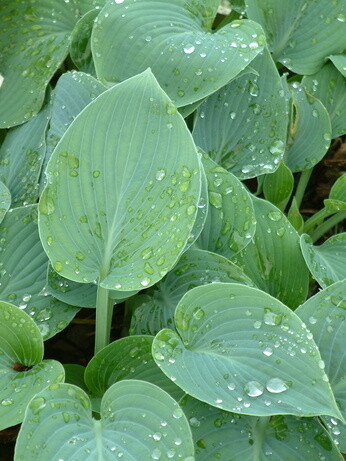
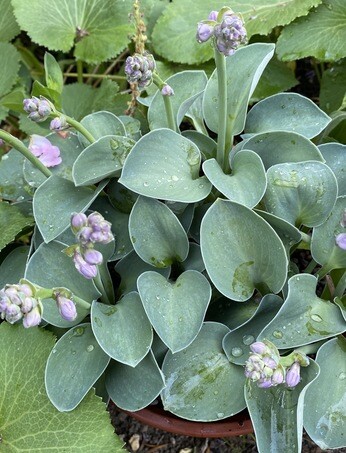
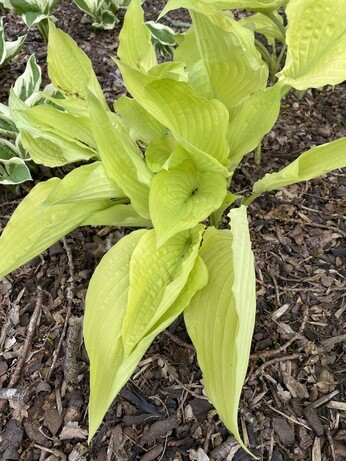
COMMENTS